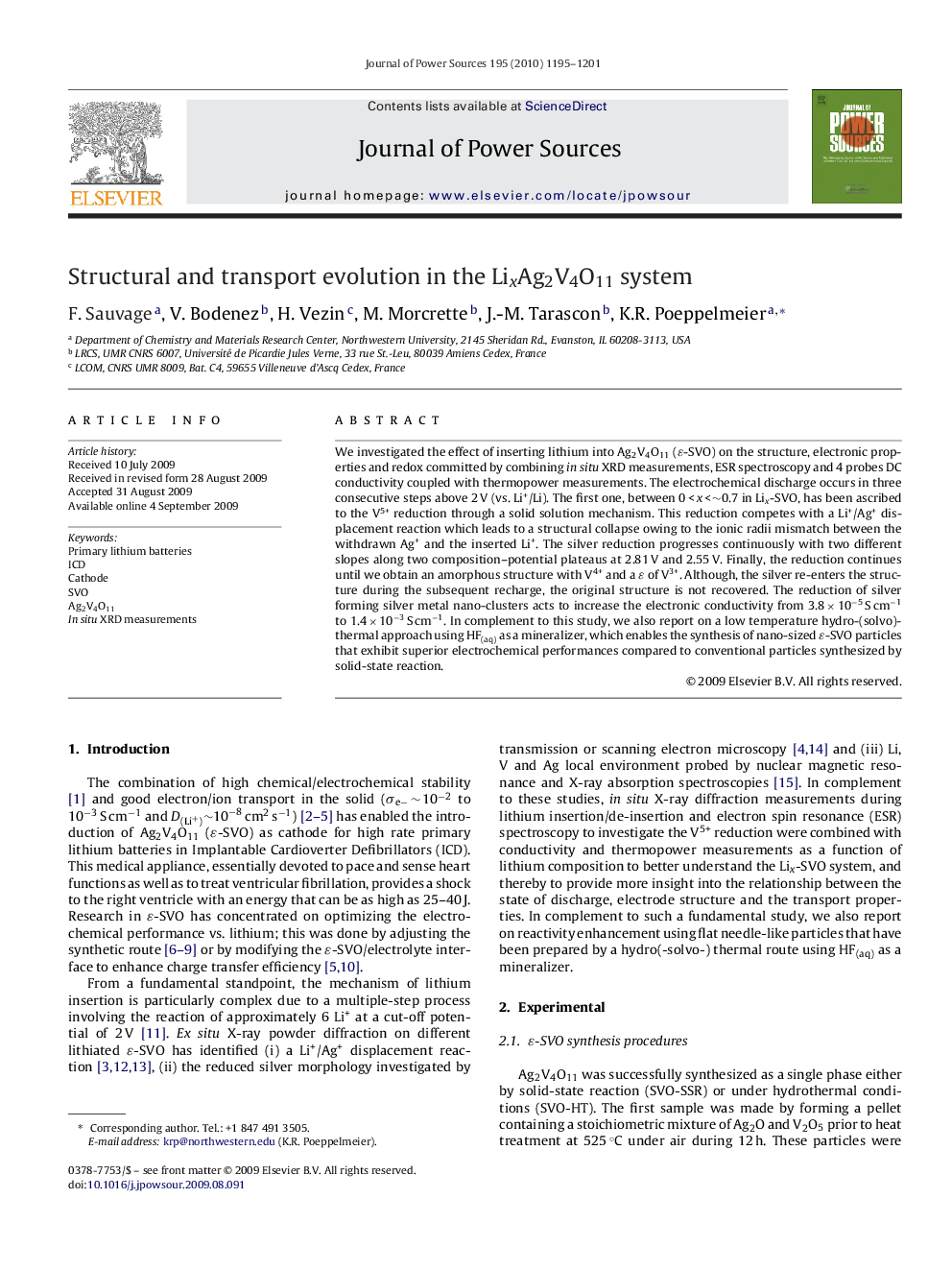| Article ID | Journal | Published Year | Pages | File Type |
|---|---|---|---|---|
| 1285120 | Journal of Power Sources | 2010 | 7 Pages |
We investigated the effect of inserting lithium into Ag2V4O11 (ɛ-SVO) on the structure, electronic properties and redox committed by combining in situ XRD measurements, ESR spectroscopy and 4 probes DC conductivity coupled with thermopower measurements. The electrochemical discharge occurs in three consecutive steps above 2 V (vs. Li+/Li). The first one, between 0 < x < ∼0.7 in Lix-SVO, has been ascribed to the V5+ reduction through a solid solution mechanism. This reduction competes with a Li+/Ag+ displacement reaction which leads to a structural collapse owing to the ionic radii mismatch between the withdrawn Ag+ and the inserted Li+. The silver reduction progresses continuously with two different slopes along two composition–potential plateaus at 2.81 V and 2.55 V. Finally, the reduction continues until we obtain an amorphous structure with V4+ and a ɛ of V3+. Although, the silver re-enters the structure during the subsequent recharge, the original structure is not recovered. The reduction of silver forming silver metal nano-clusters acts to increase the electronic conductivity from 3.8 × 10−5 S cm−1 to 1.4 × 10−3 S cm−1. In complement to this study, we also report on a low temperature hydro-(solvo)-thermal approach using HF(aq) as a mineralizer, which enables the synthesis of nano-sized ɛ-SVO particles that exhibit superior electrochemical performances compared to conventional particles synthesized by solid-state reaction.
